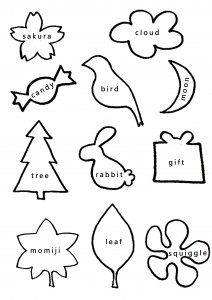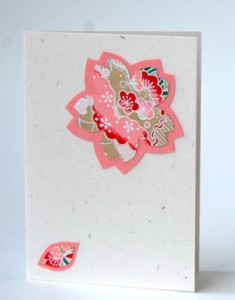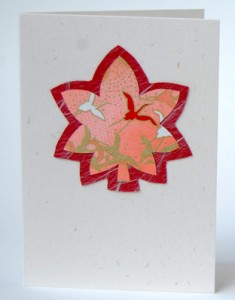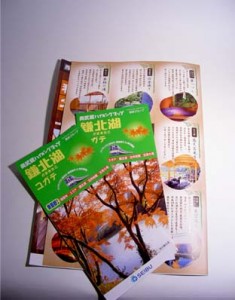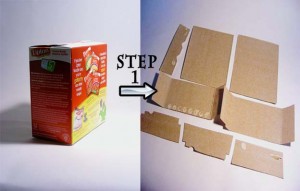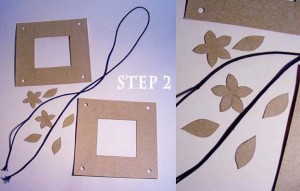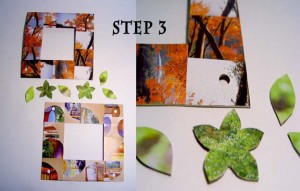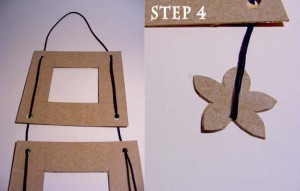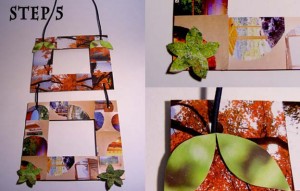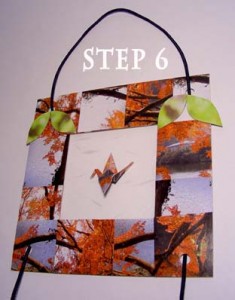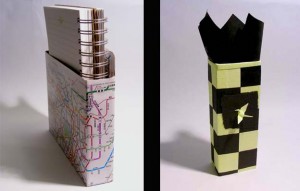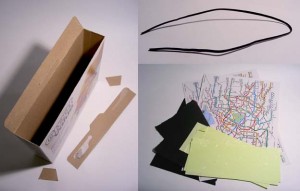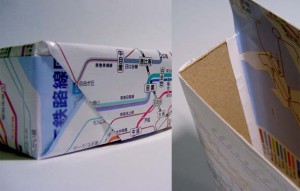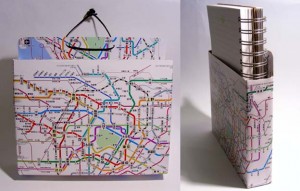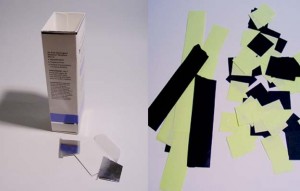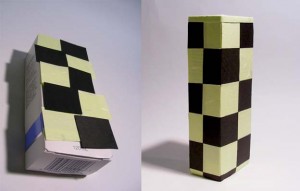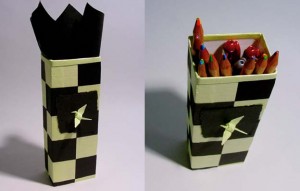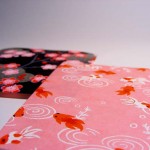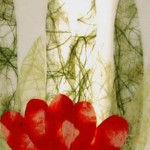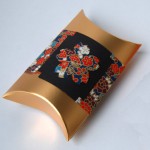Fabric Embellishments for Greeting Cards
For those of us who always seem to have scrap fabric around, there are many different options to use these scraps, no matter how small they may be. One of the best and easiest crafts is to make cute greeting card embellishments. Regardless of the amount and size of fabric you have available, there are endless things you can do with them:
Cute Bow
A bow is simple, cute, and can be combined with other things for any occasion throughout the year. The first thing is to cut out a large rectangle or smaller rectangles from the fabric. Set any leftovers aside for extra decoration later. Next, fold the fabric accordion style, pinch and secure the middle. You can use staples, twist ties, thin ribbon, clear tape or make a small stitch to keep all of the pleats together. Finally, attach it to the card with hot glue, double sided tape or another stitch through the paper and bow. Now, you are free to add any other details that you would like. Create a present with the bow on top, draw a tree with bow decorations, add it as a hair tie for a little girl, on a kite string, balloon, make a butterfly and so on… there are hundreds of things you can do!
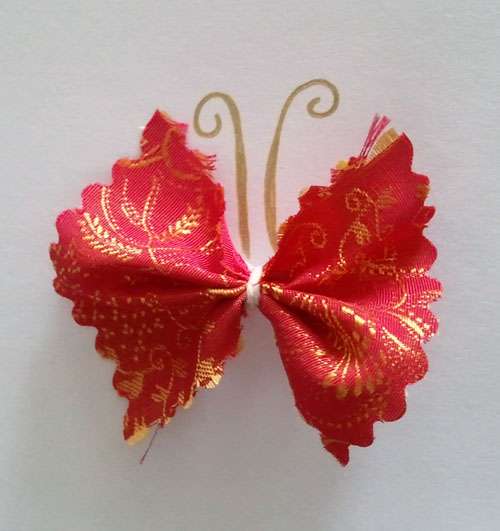
Shapes and Textures
Fabrics come in a wide range of textures and can generally be cut into any shape imaginable, so why not get creative and cut out rough shapes and arrange them as a collage, a puzzle or add one larger shape to frame or layer another decorative piece. No matter how plain a card may seem at first, just adding one single piece of fabric with some decorative touches using a metallic pen, a card will instantly have depth and visual appeal. One simple example is to cut out a few squares and rectangles, arrange them around the card (front and back) then quickly draw in a little bow above each shape. These instantly look like wrapped gifts, making them the ideal handmade card for Birthdays Anniversaries and holidays like Christmas.
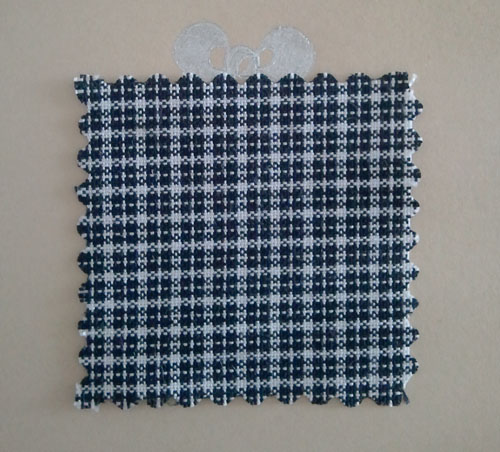
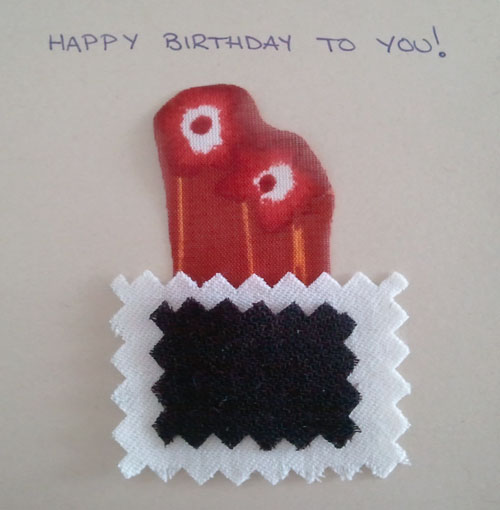
Extras
Other great extras that can add depth to a card and help create a fun unique card is to add little decorative items like sticker, buttons, pins brooches and so on. Look through old jewellery boxes or old junk drawers to see what can be used. It’s incredible the amount of crafting materials we can find when looking through forgotten drawers and boxes around the house!
As I always say, play around with the fabric and get creative with what you have on hand. Try to get inspiration from sites online or try to create something unique. Not only will you make something from the heart but you will also help out the environment by keeping items out of the trash!
Easy Greeting Card Project – Silhouettes
In an effort to reduce waste and purchasing new materials for projects, I’ll try to post different project ideas for you to try at home.
I’m sure if you searched your home, you would find a wide range of scrap paper from packages, old newspapers, magazines, flyers, wrapping paper etc…
No matter the size, one of the simplest decorative things you can make is a silhouette.
Silhouettes are basically a cut out shadow of an image. Usually just an outline of something without other details. They can be done with paper, fabric and even painted/colored in.
Here are a few that I drew as examples:
Use them to decorate your greeting cards, make cute gift tags or string them up for adorable mobiles.
Decorative Frames
As I mentioned yesterday, there are many uses for cardboard boxes from dry foods and toiletries.
Another interesting project is to make decorative frames from a small cardboard box and flyers or brochures. If you have any random materials that you can use, try the same method or e-mail me (via contact page) if you would like some ideas.
For this project, I have the following items:
- One small cardboard box (from dry soup mixes)
- One flyer for spas and two autumn train travel brochures
- One elastic cord measuring 75cm long (a string or ribbon will also work)
To complete the project, I also have scissors, exacto knife, double sided-tape (other adhesives like homemade glue can also be used), clear tape, a hole punch, ruler, and a pencil.
Steps to make decorative frames:
First, take the box apart by cutting out all the sides.
Take any of the sides to make the frames out of (I used the two larger sides). Trim the edges so that they’re straight and measure a border on it, you are also free to cut out any shape you like (this will mark the area to cut out for the inner frame portion that will display any photos).
With the remaining pieces of cardboard, cut out any shapes you like. They will be used later to add extra decorative details to the frame.
Once you have all of your pieces cut out, it’s time to cover them with your available paper.
The easiest way is to cover one side of each piece with adhesive and place the paper over it, then trim so they match perfectly with the shape edges.The second way takes a little more time, but it gives a more creative look. Take your paper and cut it into strips. Arrange the strips anyway you like (alternating patterns, mixed patterns and colours etc…) then place them over the shapes that you have cut out.*I used both methods by arranging strips over the frames and covering the other smaller shapes with one piece.
Now, punch small holes by each corner to thread the cord/string/ribbon.
You can tie the two frames together with one cord, or separate them.
Thread the cord/string/ribbon from the top holes, making sure to leave some slack to be able to hang the frames later.
When you thread the cord, make sure to begin from the front to the back. Once you pull the cord through the bottom holes, secure them with tape to the back of any of the prepared extra shapes
The frames are done!
Now you can place any picture or small art piece to be displayed. The cord running down the sides of the frame can secure your photos simply by sliding the ends between them and the frame.*I’ve added a simple origami crane with a little leftover brochure paper and placed it on a white backing made from scrap washi. The simple, solid colours subdue the busy colourful frames, but match the colours perfectly.
Creative Gift Boxes and Holders
Many people purchase dry foods or toiletry products to store at home, and most of these products are packed in cardboard boxes of different shapes and sizes. Generally, after the product is removed, the box is discarded or placed in a recycling box.
Putting things into recycling facilities is a good step for the environment, but one can also use their creativity to revamp or reuse these items. A simple way to reuse these boxes is to use it as a storage box, a holder for small items, or even decorate as a unique gift box.
To begin, check around your home for any items that could be used as decoration. Remeber to use your imagination and creative eye, because many things that we throw away or recycle can actually be used for something new.
I will show you how to reuse two different boxes (one from dry foods and one from a facial product) and combine them with other materials from home. I will also use some of my leftover chiyogami or washi from previous projects. Most of the decorative paper I use are very small pieces, since I’m what most would call a “pack rat”, and have boxes filled with decorative paper from past gifts, calendars, posters, magazines and even flyers with nice colours or designs.
First step is find a piece of decorative paper large enough to wrap the entire box. If you only have small scraps, it’s simple to collage or create a mosaic design over a box. I’ll show both methods with two different boxes.
For these two projects, I’ve found the following items:
- One snack bar cardboard box
- One facial cream box
- Three scrap pieces of black paper
- Three to four pieces of scrap washi (japanese paper) in a light green colour
- Two colourful train maps
- One black twist tie from old packaging (approximately 30cm long) – string or ribbon will work as well.
To put everything together, I also have scissors, double-sided tape (but you can use regular tape, glue or homemade adhesive), hole punch, a pencil and ruler.
Making a Paper Holder:
This is one of the simplest projects for a practical item you can use at home or at work.
- Take a cardboard box that’s long enough to hold letters, bills or any other small bits of paper in it.
- Cut all of the flaps from the open end. If you prefer, leave one of the longer flaps on and that will become the back of the box.
- Here, you can either wrap the box as you would a gift, but just leave the open end free, or cover each face/panel separately. To hide the joint areas, use colourful/decorative tape or even stickers.
- At the top, tuck the excess paper into the open end of the box and secure with an adhesive. If you left the top flap, simply wrap the paper over it and secure with adhesive.
- Now, if you would like to hang the box, punch a hole through the back flap or back area – either one hole in the middle or two holes spaced apart from the middle. Depending on the box length, separating the holes at least 5cm would be good.
- Finally, you can use any other materials to further decorate your box
Making a Mosaic/Collage Pen Holder or Gift Box:
This project is also very easy, but will take a little more time.
- Take any paper you would like to decorate your box with. For a nice effect, use one solid coloured paper and one patterned one or two different solid colours.
- Next, cut out strips or squares from the paper -roughly judge how much paper will be needed to cover the entire box and add a few more.
- Then, arrange the pieces in a pattern that you like – either arrange them to create a picture of a flower, tile alternating colours or randomly chosen pieces are fun too.
- Secure the pieces with an adhesive all around the box until it’s completely covered.
- Once that is complete, you can add any other details or decorations that you like. Origami is a simple way to add a three dimensional embellishment.
- If you would like to seal the box, you can purchase them in craft stores. If you have white glue, add a little water and that should also work well.
Once it’s done, place anything you like inside, or, wrap a gift with tissue paper, place it inside with a bit sticking out of the opening, then tie with a ribbon.
Washi and Chiyogami for Scrapbooks and Photograph Storage
Throughout the year we celebrate special occasions with our good friends and loved ones.
We watch little ones grow, celebrate birthdays, weddings, fun holidays and capture each memorable moment with a photograph to keep forever.
Some of us may store these photographs in a simple envelope, photo album, scrapbook, or in a traditional box of keepsakes, while others may happily display them around the home or work.As the years go by, those memories become more and more valuable and safe storage is very important, so that the captured memories really can last a lifetime.
One of the best papers to use for storing, decorating, sending or displaying photographs is Japanese Washi and Chiyogami paper.
The traditionally made washi uses purified water and natural plants and fibres which makes it acid free. This not only makes it the best paper to use for storage and protection, but also offers a lovely look and texture to compliment photographs, rather than overtake them.
There are fine and delicate washi that allow light to pass through it. This creates a very lovely look when framing a photograph. All you have to do is cut the paper at least 2 centimetres wider than all the sides of the picture and secure it to the back so that the excess juts out as a frame. Once that is complete, place it on a window or safely in front of a light source, such as a tealight or lamp.
Other types of washi are thicker and have varied textures that can add a bold compliment to images.
To protect all of your pictures, even if they are stacked in a box, simply place one sheet of washi between each photograph, then wrap one long sheet over the entire stack and tie with a string.
Chiyogami is fantastic for decorations since it’s carefully painted with an array of stunning colours and patterns. The colour selection for chiyogami paper is unbelievable and durability can’t be beat. Even though it’s light as a feather, it can be used like fabric, even when wet.
Covering or decorating storage boxes, picture frames, envelopes and using it as scrapbooking paper truly adds a special touch and shows how important the photos are.
If Chiyogami seems like it’s too flashy to use in great amounts, try using it as a touch of colour.
One very simple way is to cut out shapes or silhouettes( animals, flowers, objects etc…) and attaching them to neutral washi paper or directly onto plain picture frames, photo albums , boxes, and even the photos themselves.
One thing to remember is to make sure to use acid free adhesives when attaching the paper directly on the photographs. If you are still worried about adhesives, try simple origami. There are thousands of origami folding techniques that can be done simply to make lovely add-ons for decoration, without using glues or tape to attach them on. Search online for keywords like origami page markers or simple origami decorations, this will give you endless ideas as well as step-by-step instructions.
The page markers are my personal favourite since they are simple and add a sweet touch.


